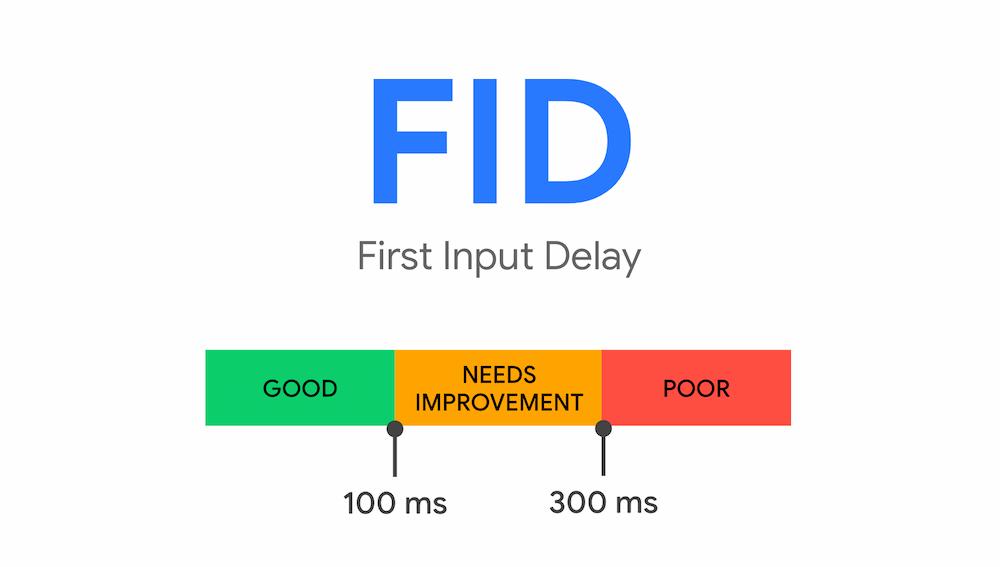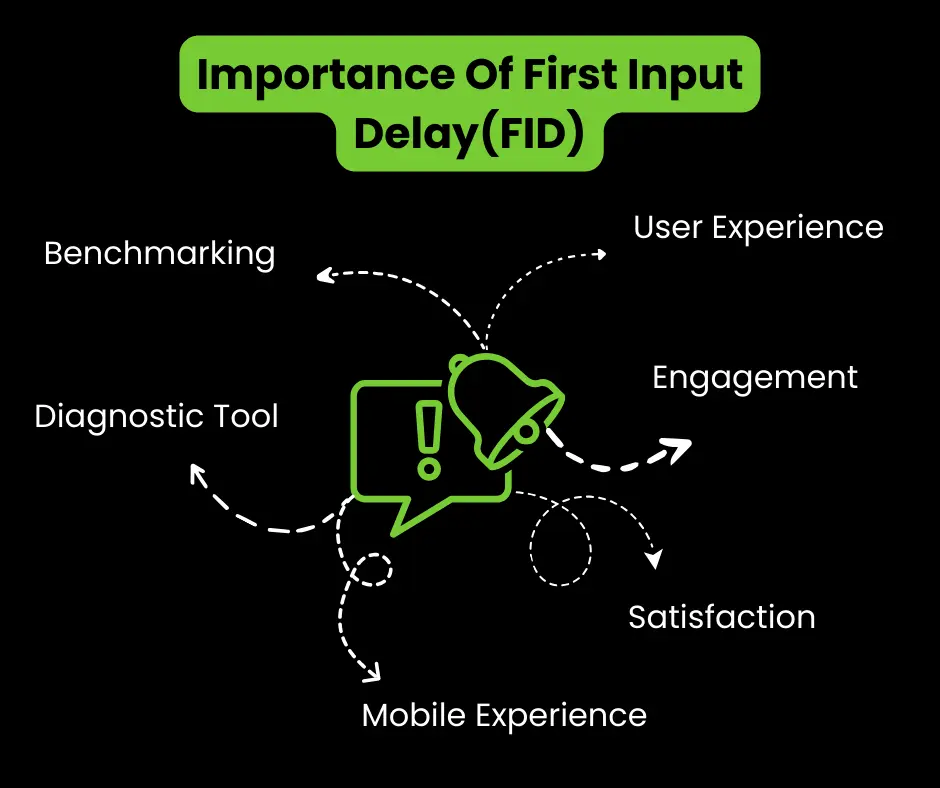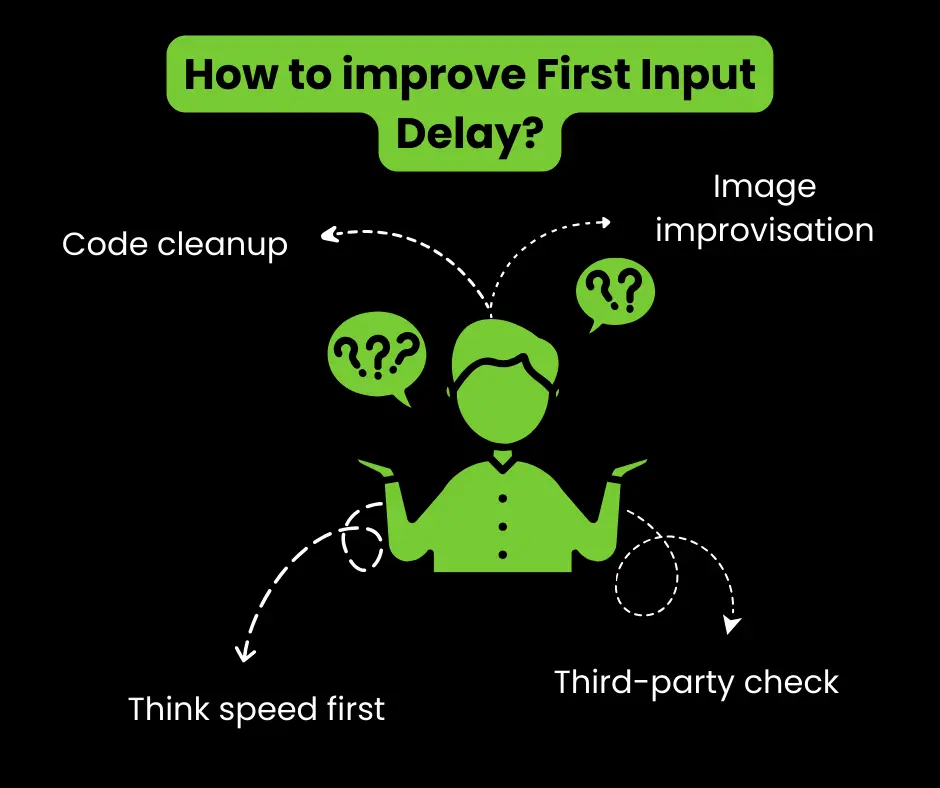First Input Delay(FID)
Definition
First Input Delay(FID) is a metric that measures the time from when a user first shows some interaction with a page (like, a click on the link, tap on a button, or if there is some custom, JavaScript-powered control) to the time when the browser begin processing event handlers in response to that user’s interaction.

Source: FID
Description
Think of it like trying to talk to someone, but there’s a pause before they respond. It’s a small delay, but it can be annoying and make you feel like the website isn’t very responsive.
Here’s the key thing about First Input Delay(FID):
- It measures the time between when you first interact with a website (like clicking a button) and when the website actually starts responding. You get the information about the delay users experience before the browser begins processing their input, which influences their perception of the website’s responsiveness and usability.
- A low FID means the website feels fast and responsive. A high FID means it feels slow and clunky.
Now if we talk in terms of web performance, First Input Delay sits among the “Core Web Vitals,” a set of metrics that Google considers crucial for a positive user experience.
Like its name suggests, it measures the wait time between a user’s first interaction with a web page (a click, tap, or key press) and the browser’s initial response. This delay directly impacts how responsive and engaging a website feels.
So you have to make sure that your buttons, links or any other custom javascript function must operate seamlessly so that google could give you a good score for the FID metric.
Importance Of First Input Delay(FID)?

- User Experience: It has a direct impact on how fast and responsive a website feels for users.
- Engagement: A low FID encourages users to interact more with a website, which leads to increased engagement.
- Satisfaction: Faster response times make users happier and more likely to return to the site.
Google uses FID as a ranking factor, so improving it can help a website rank higher in search results.
- Mobile Experience: FID is critical for mobile users, as network conditions and device capabilities vary greatly.
- Diagnostic Tool: It identifies performance issues that can frustrate users, allowing developers to prioritize fixes.
- Benchmarking: To ensure a good user experience, keep the FID under 100 milliseconds.
- Continuous Improvement: Monitoring FID enables websites to continuously improve their performance and user satisfaction.
How to improve First Input Delay?

Improving First Input Delay (FID) is critical for improving the user experience and overall website performance. Let us discuss things that we can do to improve –
- Code cleanup: Imagine your website’s code as a messy room filled with unnecessary items. By cleaning up and removing unnecessary scripts and code, you make your website lighter and faster, just like tidying up a room makes it easier to move around in.
- Image improvisation: If your image takes a long time to load it could slow things down. To resolve this you can resize and compress your images to make them smaller and faster to load. With this, images become manageable and quicker to load on your website!
- Think speed first: Imagine your website having a “to-do list.” Make sure tasks that make the website interactive (like showing buttons) are tackled first, before anything fancy.
- Third-party check: Sometimes websites use outside help (like ads or social media widgets). Check if they’re slowing things down and see if there are faster alternatives.
- Caching tricks: Think of caching like leaving your shoes by the door for quick access. The browser can store frequently used website parts, so it doesn’t have to fetch them every time.
For example,
- Amazon known for its lightning-fast loading speeds and emphasis on user experience, Amazon likely prioritizes optimizing FID. Their constant investments in technology and infrastructure contribute to a smooth and responsive website experience.
- Google as the creators of the Core Web Vitals metrics, including FID, Google certainly practices what they preach. Their websites and apps are renowned for their responsiveness and usability, suggesting well-optimized FID scores.
FAQs
Why is First Input Delay important?
FID is important for assessing the responsiveness of a website. If your website has low FID, this indicates that users can interact with your site quickly, leading to a better user experience.
What causes a high First Input Delay?
Several factors can contribute to a high FID, including –
- Heavy JavaScript execution
- Long tasks
- Excessive rendering time.
These issues can slow down the responsiveness of a webpage.
How can I improve First Input Delay on my website?
There are certain ways to improve your website’s FID, focus on optimizing your website’s performance by
- Reducing JavaScript execution time
- Minimizing render-blocking resources
- Prioritizing critical tasks that affect user interaction.





We would love to have your opinion.